NORTH AMERICA currently has over 20 GW of installed utility-scale PV generation with 2016 seeing the largest amount of PV installed to date with over 14 GW brought online. The majority of this installed utility-scale PV base could expand production hours and increase production with the addition of solar plus storage.
Here we will examine the coupling of energy storage with PV by comparing the three principal methodologies for doing so: AC-coupled, DC-coupled, and hybrid solar plus storage inverters. We will also consider all possible revenue streams of solar plus storage and their availability based on available systems for coupling solar plus storage.
[bctt tweet=”Learn More About How Energy Storage Can Maximize Production of Utility-Scale PV Arrays” username=”dynapowerenergy”]
SOLAR PLUS STORAGE REVENUE STREAMS
The addition of energy storage to an existing or new utility-scale PV installation allows system owners and operators the opportunity to capture additional revenues through:
CAPACITY FIRMING
Turn Solar Energy Into A Dispatchable Asset
For certain time periods during the day the availability of storage gives the system operator the ability to bid firm capacity into merchant markets. That is storage makes PV generation a dispatchable revenue generating asset.
Depending on the available local power market, this may translate to higher kWh rates for firm capacity during dispatchable periods.
ENERGY TIME SHIFTING
Utilize Generated PV Energy When Its Value is Highest
Energy Storage allows bulk energy shifting of solar generation to take advantage of higher PPA rates in peak periods, or to allow utilities to address daily peak demand that falls outside periods of solar generation.

CLIPPING RECAPTURE
Maximize Value of PV Generated Energy
Given common inverter loading ratios of 1.25:1 up to 1.5:1 on utility-scale PV (PVDC rating : PVAC rating), there is opportunity for the recapture of clipped energy through the addition of energy storage.
Using a simplified system for illustrative purposes, consider a 14MWDC PV array behind a total inverter capacity of 10MWAC. Depending on your location and type of racking, the total clipped energy can be over 1,000,000 kWh per year. With storage attached to the array, the batteries can be charged with excess PV output when the PV inverter hits its peak rating and would otherwise begin clipping. This stored energy can then be fed into the grid at the appropriate time. Without energy storage, these kWhs are lost and revenues stunted.


CURTAILMENT & OUTAGE RECAPTURE
Continuous Uptime and Revenue Generation
When storage is on the DC bus behind the PV inverter, the energy storage system can operate and maintain the DC bus voltage when the PV inverter is off-line for scheduled or unplanned outages. When the PV inverter is offline the energy from the array can still flow to the batteries via the DC-DC converter ensuring energy can be harvested for later use.
The same uptime capabilities apply when a large utility- scale array is curtailed by the ISO or utility. Curtailment is sometimes seen in areas of high solar penetration — such as California — when there is overall excess production on the grid. With a DC-coupled energy storage system, energy production can continue with energy being stored and available for discharge when curtailment.
LOW VOLTAGE HARVESTING
Make Money On The Edges
PV inverters typically require a minimum threshold DC bus voltage to operate. On a 1,500VDC nominal system, this ‘wake up’ voltage may be around 500VDC. As a result of this minimum voltage threshold, available generated energy in the morning and evening when voltage on the array is below the PV inverter ’wake up’ threshold is not captured. Adding energy storage through a DC-to-DC converter allows for the capture of this generated energy from the margins.
This phenomenon also takes place when there is cloud coverage. In both cases this lost energy could be captured by a DC-coupled energy storage system.
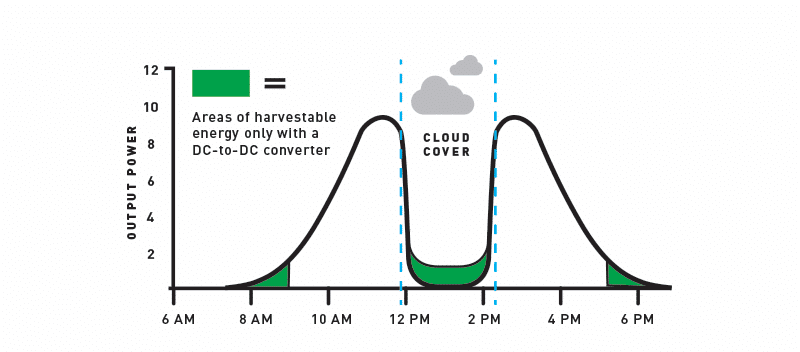
RAMP RATE CONTROL
Modulate Power for Continuous Grid Connection
Ramp rate control is often required by utilities and ISOs for PV and wind systems to mitigate the impact of a sudden injection of power onto the grid, or a sudden loss of generation due to the intermittent nature of both generation sources.
A ramp rate of 1MW/minute, for example, has been required by HECO in Hawaii to limit the speed with which a large array can come up to power or trail off in the event of cloud cover.
A storage system coupled with PV can monitor the PV inverter output and inject or consume power to ensure the net output remains within the ramp requirements. This allows for continuous energy injection into the grid. Additionally, with this ramp rate control benefit, energy otherwise lost when a PV inverter would self-regulate during a ramp up (by manipulating the I-V curve to curtail power output) can now be stored for later use.
[bctt tweet=”Learn More About the 3 System Options for Adding Energy Storage to Utility-Scale PV Arrays to Maximize Production” via=”no”]
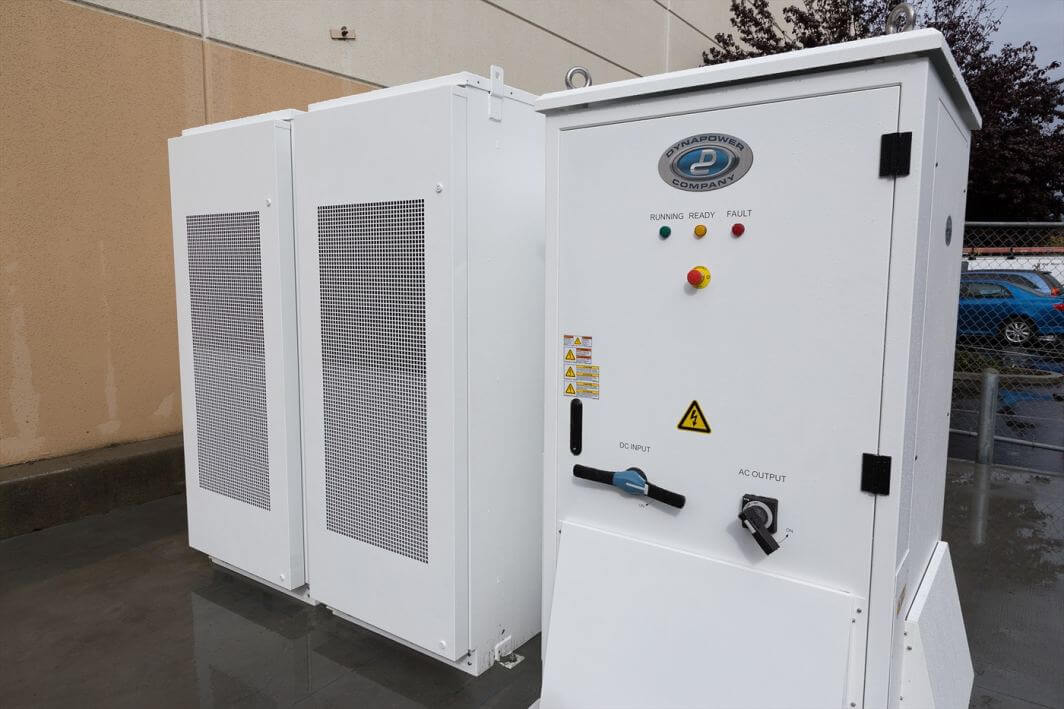
AC-Coupled Solar Plus Storage
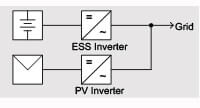
In AC-coupled systems there are two inverters, one for the battery and another for the solar PV system. With this system configuration, the power to grid can be maximized by discharging both the battery and PV at maximum power. This configuration does pose integration challenges for microgrid operations. Dynapower offers AC-coupled solar plus storage at both behind the meter and utility scale levels.
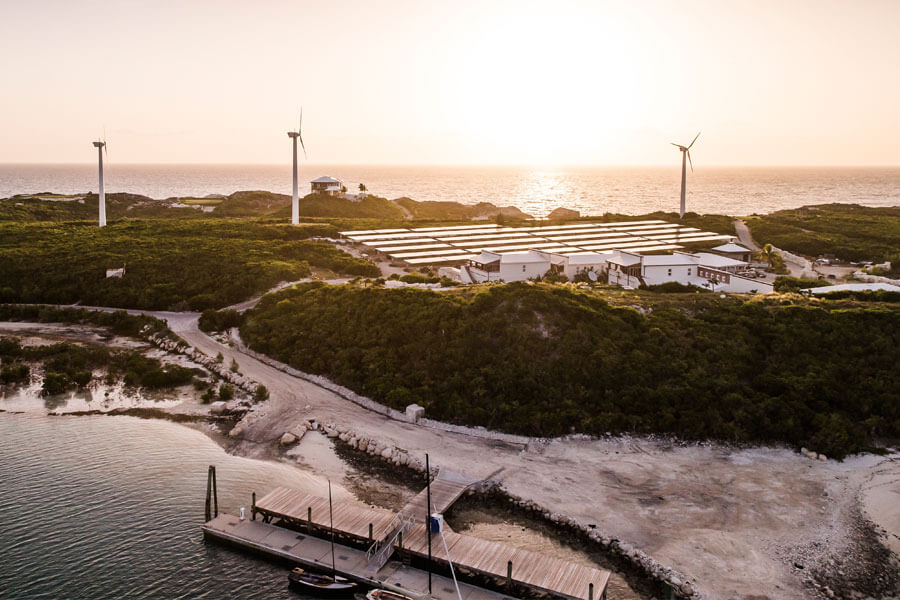
DC-Coupled Power System
Primarily of interest to grid-tied solar projects, the DC coupled solution is a relatively new approach for adding storage to both existing and new construction solar projects.
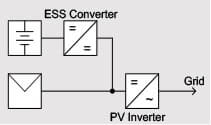
Distinct advantages include reduced cost and potentially higher efficiency than the other options.
For the tropical island of Over Yonder Cay, Dynapower provided a bidirectional, DC-to-DC converter which integrates battery energy storage and solar PV into the island’s microgrid.
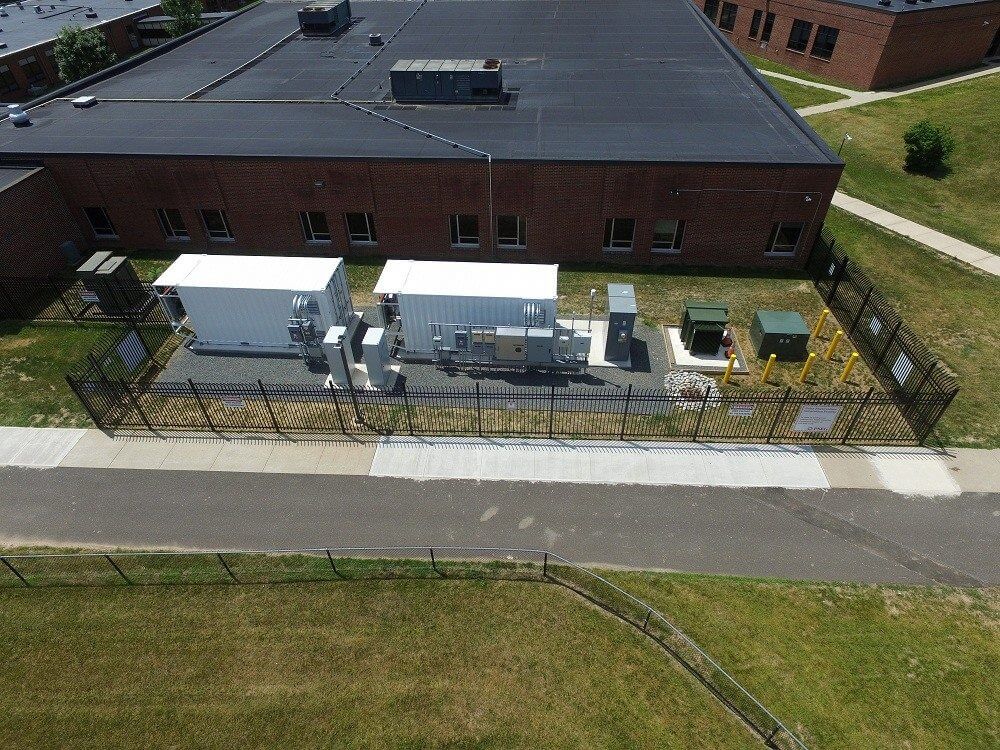
Hybrid Solar Plus Storage

With increased interest in combining solar and energy storage, Dynapower has created a line of Hybrid Solar Plus Storage inverters which have two DC inputs; one with maximum power point tracking for PV, and the second is bidirectional and intended for use with battery energy storage. This type of system is ideal for microgrids as integration is no long required between two separate inverters.
At Hopewell Valley Central High School, Dynapower teamed with PSE&G to deliver a 1 MW project using two Dynapower containerized solar plus storage systems. This project generates solar energy which is self-consumed by the school, and also features Dynapower’s proprietary backup power capabilities in the event of a grid disturbance.
AC/DC/HYBRID
SYSTEM COMPARISON
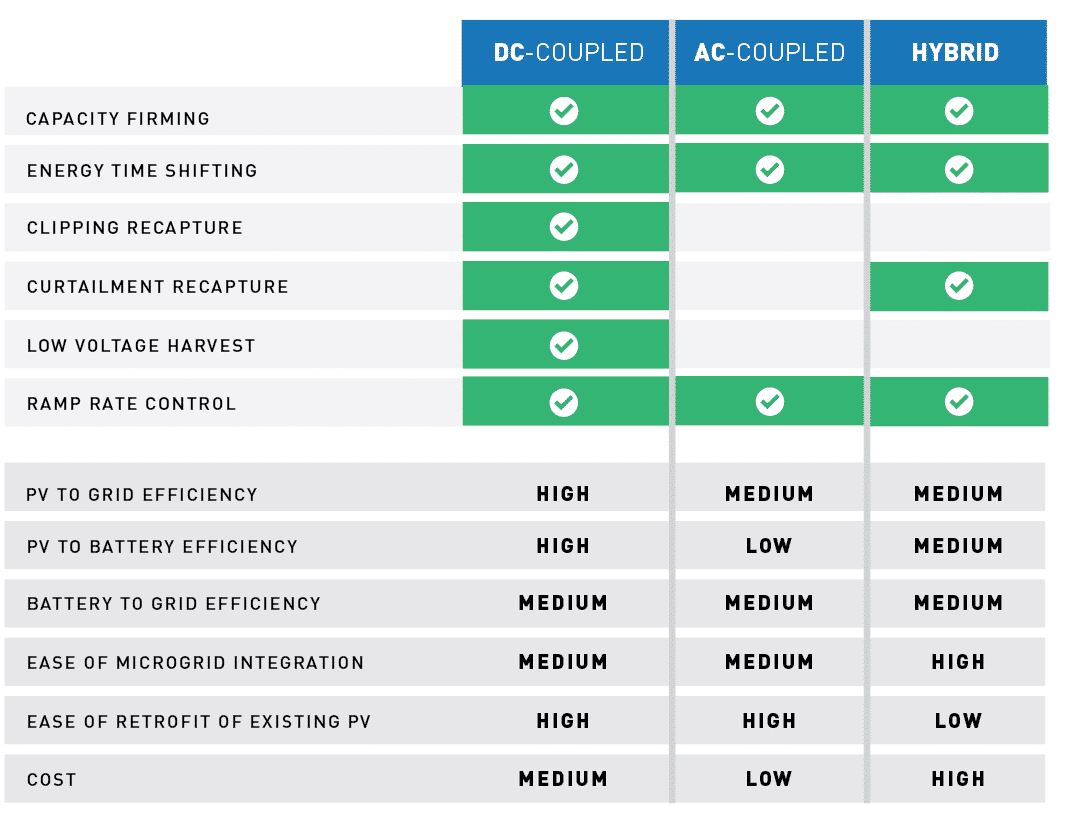
[bctt tweet=”Have a solar plus storage project and not sure whether to use AC or DC coupling? Dynapower can help!” username=”dynapowerenergy”]
Dynapower has successfully delivered all three system architectures for our customers in both grid-tied and microgrid applications. When evaluating which of the system architectures is optimal, the options must be compared across a variety of metrics including cost, efficiency, reliability, and flexibility. With over a decade of experience in solar plus energy storage and over 500 MWs of energy storage solutions deployed worldwide, Dynapower can assist you in selecting the optimal system for your existing or new PV array.